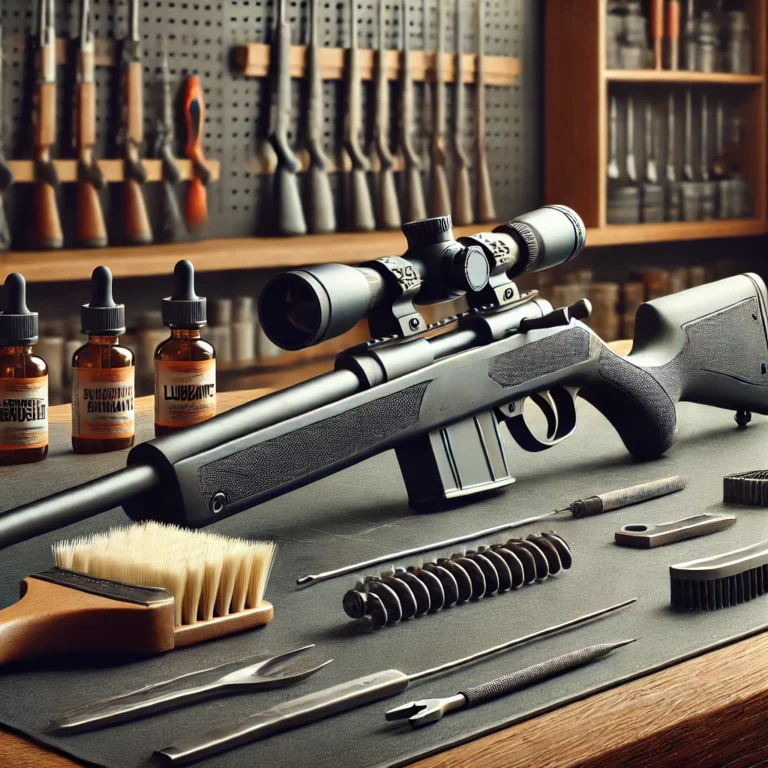The Ruger 77/357 Rifle is a dependable and versatile firearm, widely appreciated by enthusiasts for its performance and durability. However, like any mechanical device, it can face occasional issues. This comprehensive guide dives deeper into troubleshooting and maintenance, offering advanced tips and techniques to ensure your Ruger 77/357 Rifle operates flawlessly for years to come. Explore the sections below for expert solutions and maintenance strategies.
Table of Contents
- Feeding Issues in the Ruger 77/357 Rifle
- Extraction Problems in the Ruger 77/357 Rifle
- Accuracy Concerns with the Ruger 77/357 Rifle
- Advanced Maintenance Tips for the Ruger 77/357 Rifle
- Frequently Asked Questions
Feeding Issues in the Ruger 77/357 Rifle
Common Causes of Feeding Issues
- Misaligned magazines.
- Worn or damaged feed ramps.
- Dirt and debris buildup in the action.
Solutions
- Check the Magazine Alignment:
- Ensure the magazine is properly seated. Misalignment can disrupt feeding cycles.
- Inspect the magazine for visible damage or wear, and replace if necessary.
- Inspect and Clean the Feed Ramps:
- Use a stiff brush and a high-quality solvent to remove any carbon buildup or debris.
- Consider polishing the ramps with a soft cloth and fine-grade polishing compound for smoother feeding.
- Lubricate Moving Parts:
- Apply a lightweight lubricant to key components like the bolt and chamber.
- Avoid over-lubricating, as excess oil can attract dirt and cause additional issues.
Pro Tip: Regular maintenance and proactive inspections can prevent feeding issues in the Ruger 77/357 Rifle.
Extraction Problems in the Ruger 77/357 Rifle
Common Causes of Extraction Problems
- Worn or damaged extractor claw.
- Use of subpar or incompatible ammunition.
- Accumulation of fouling in the chamber.
Solutions
- Inspect the Extractor:
- Examine the extractor claw for any signs of wear, cracks, or chipping.
- Replace faulty components promptly to restore proper function.
- Use Quality Ammunition:
- Invest in brass-cased ammunition known for consistent performance and reliability.
- Avoid steel-cased or reloaded rounds that can damage the extractor over time.
- Thoroughly Clean the Chamber:
- Use a chamber brush and solvent to remove grime, fouling, and residue.
- Polish the chamber lightly to prevent friction during extraction cycles.
Pro Tip: Keeping the chamber clean and using high-quality ammunition are key to resolving extraction problems with the Ruger 77/357 Rifle.
Accuracy Concerns with the Ruger 77/357 Rifle
Common Causes of Accuracy Issues
- Loose or improperly mounted optics.
- Accumulated fouling or debris in the barrel.
- Inconsistent ammunition loads.
Solutions
- Secure the Optics:
- Verify that scope rings are aligned and screws are tightened to the recommended torque.
- Ensure the scope is leveled correctly for optimal accuracy.
- Perform Regular Barrel Cleaning:
- Use a bore snake or cleaning rod with a high-quality solvent to clean the barrel after every session.
- Remove copper fouling with a specialized cleaner to maintain consistency.
- Select Consistent Ammunition:
- Choose ammunition with consistent powder charges and bullet weights.
- Test various loads to identify the best-performing rounds for your rifle.
Pro Tip: Regular cleaning, secure optics, and consistent ammunition are essential for achieving top accuracy with the Ruger 77/357 Rifle.
Advanced Maintenance Tips for the Ruger 77/357 Rifle
- Deep Cleaning: Periodically disassemble the rifle for a thorough cleaning. Use ultrasonic cleaners for small parts to ensure optimal performance.
- Inspect for Wear: Regularly check for wear and tear on the bolt, extractor, and trigger components. Replace parts as needed.
- Rust Prevention: Apply a rust-preventative coating to all metal surfaces, especially in humid environments.
- Use Quality Lubricants: Opt for lubricants specifically designed for firearms to ensure smooth operation under varying conditions.
- Barrel Break-In: If you have a new barrel, follow proper break-in procedures to enhance accuracy and longevity.
Pro Tip: Consistent and advanced maintenance practices extend the life and reliability of your Ruger 77/357 Rifle.
Frequently Asked Questions
1. Can I use .38 Special ammunition in my Ruger 77/357 Rifle?
Yes, the Ruger 77/357 Rifle is compatible with .38 Special rounds, but accuracy and performance may vary.
2. What is the recommended cleaning interval for the Ruger 77/357 Rifle?
Clean your rifle thoroughly after every shooting session or at least every 50-100 rounds to maintain performance.
3. Why is my rifle jamming during feeding?
Jamming may result from magazine misalignment, worn feed ramps, or debris in the action. Inspect and clean these components regularly.
4. How do I prevent rust on my Ruger 77/357 Rifle?
Store your rifle in a dry, climate-controlled environment and apply a protective oil coating to metal surfaces.
5. Are aftermarket upgrades recommended for the Ruger 77/357 Rifle?
Aftermarket upgrades can enhance performance but ensure compatibility and professional installation to avoid issues.
Pro Tip: These FAQs address common questions to help you optimize the performance of your Ruger 77/357 Rifle.
Regular maintenance and care ensure your Ruger 77/357 Rifle remains reliable and ready for action. Dedicate time to understanding your firearm and applying these expert tips to achieve optimal performance over the years.

